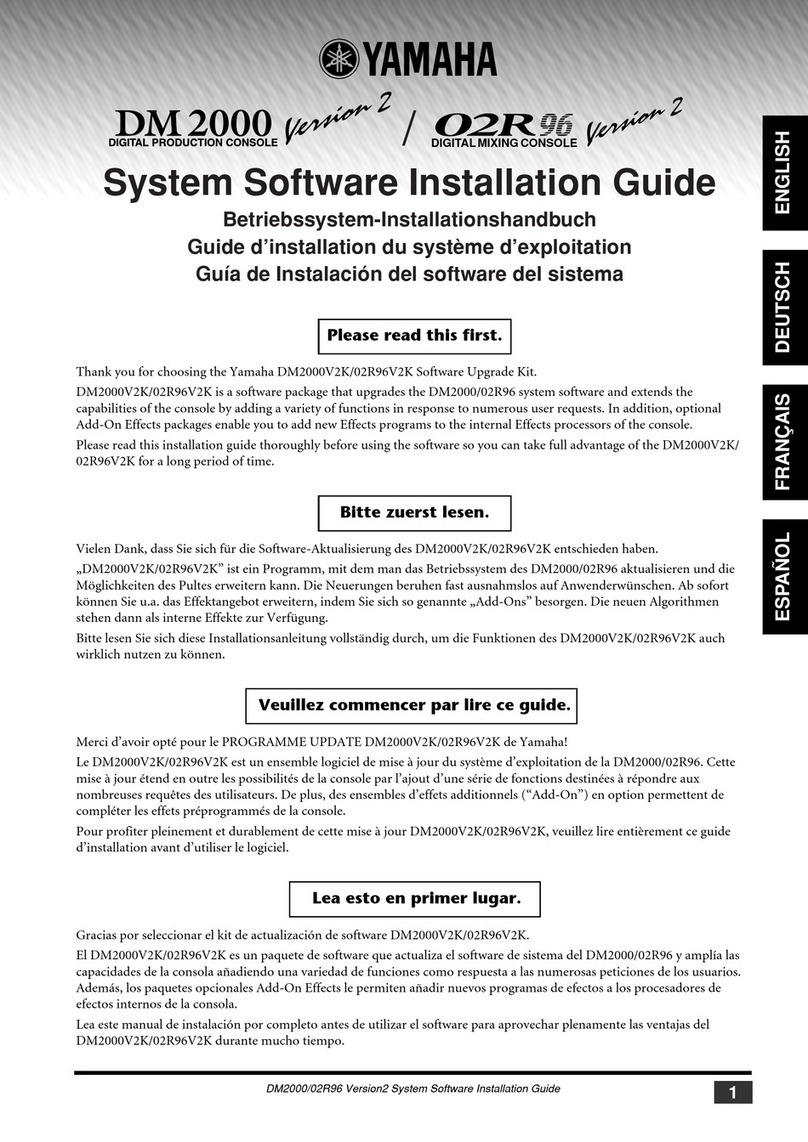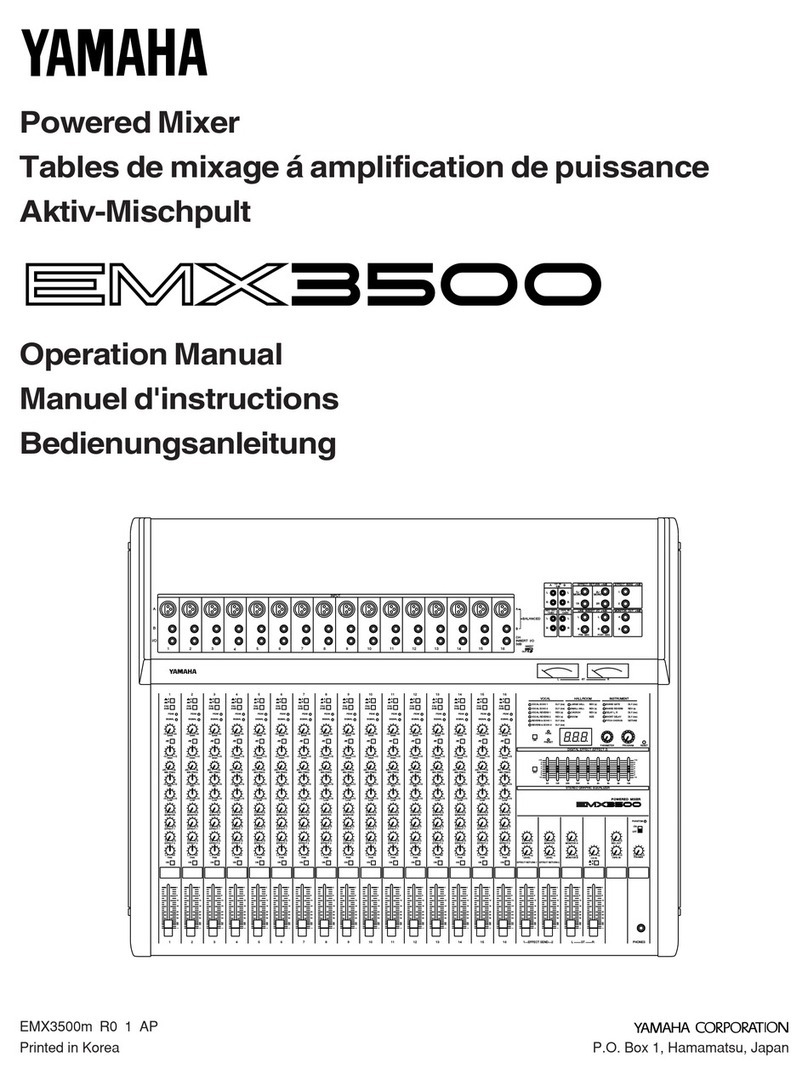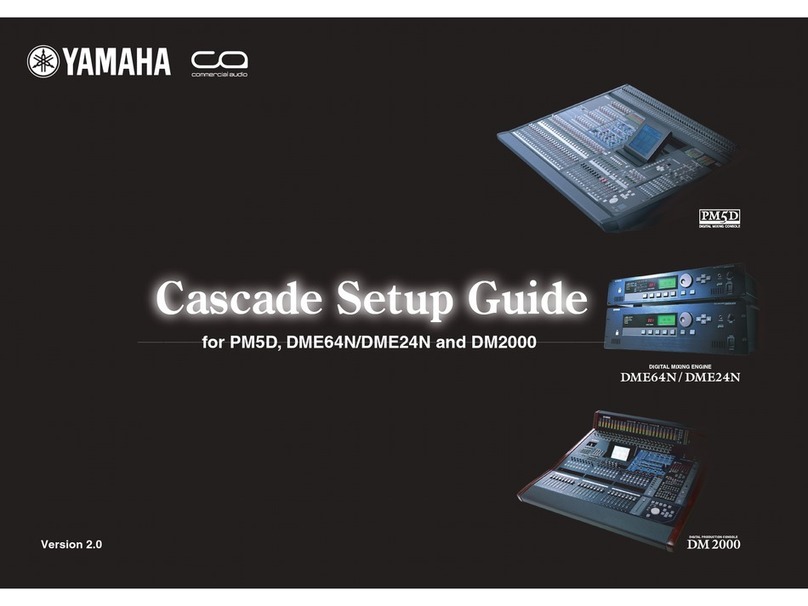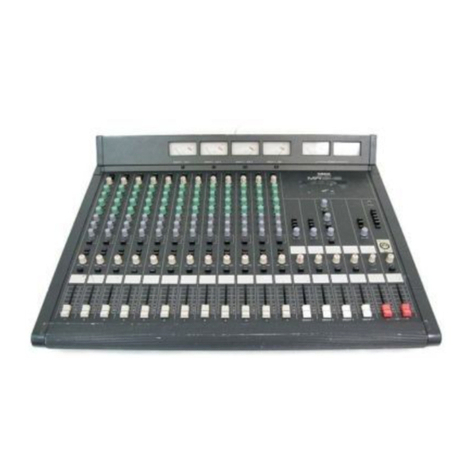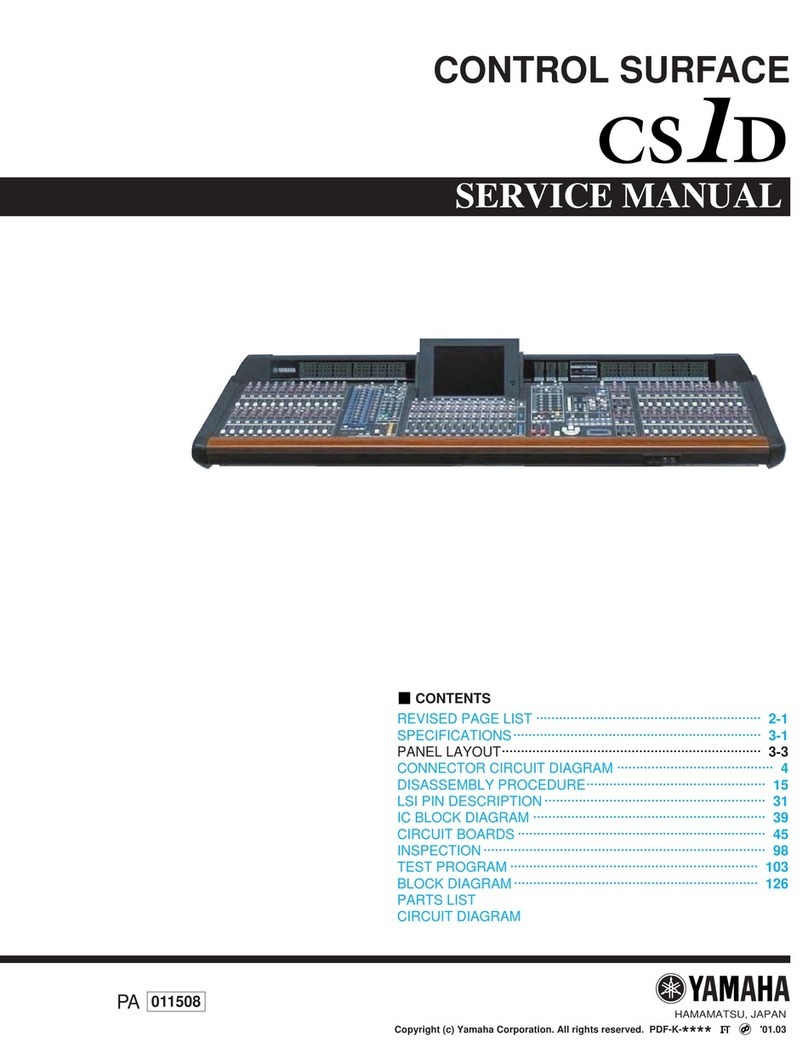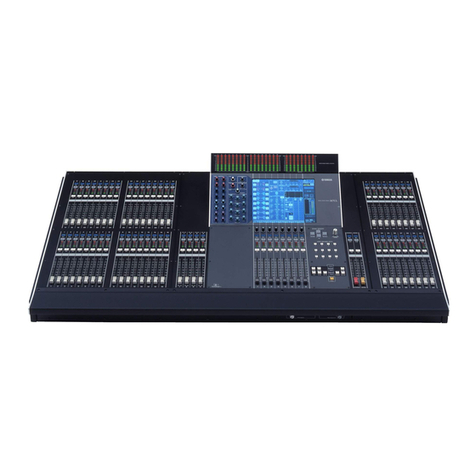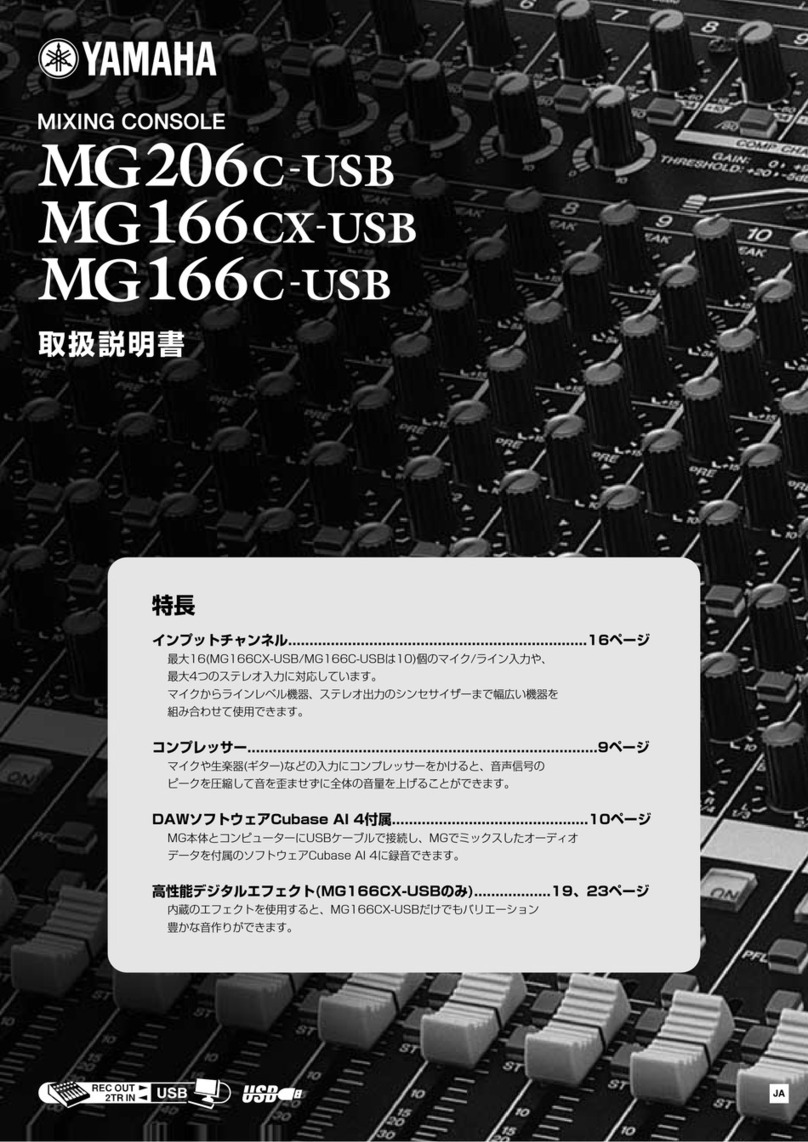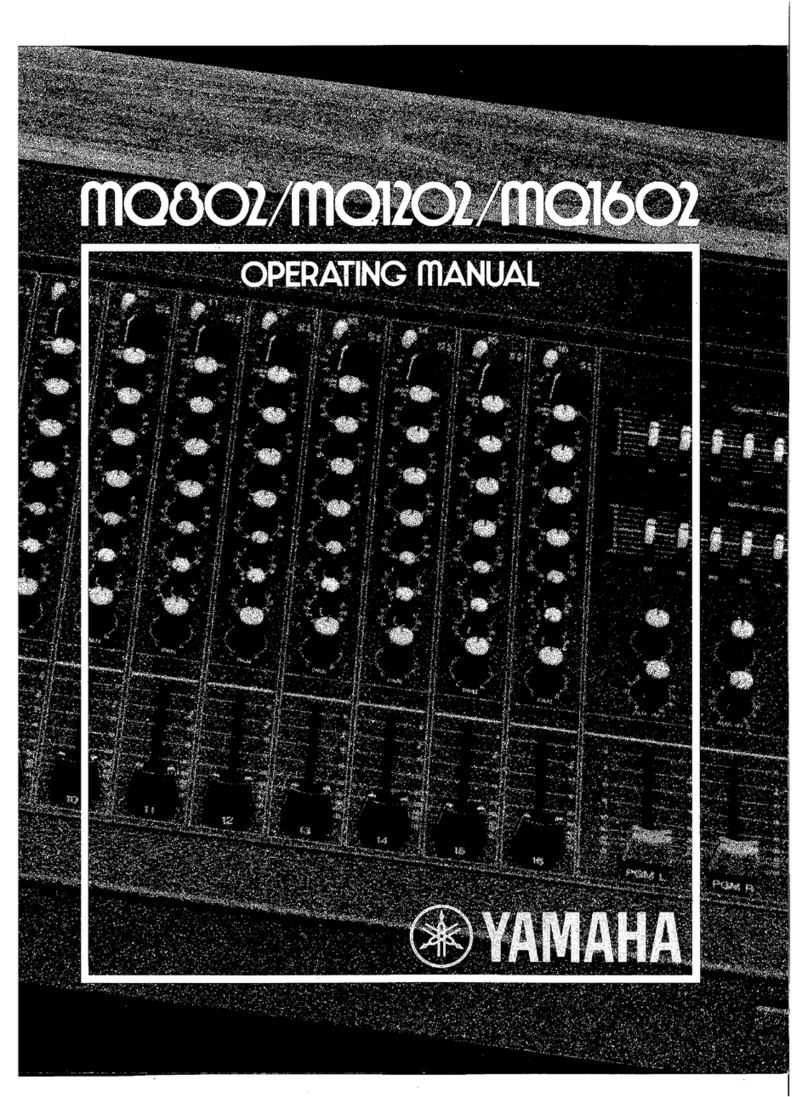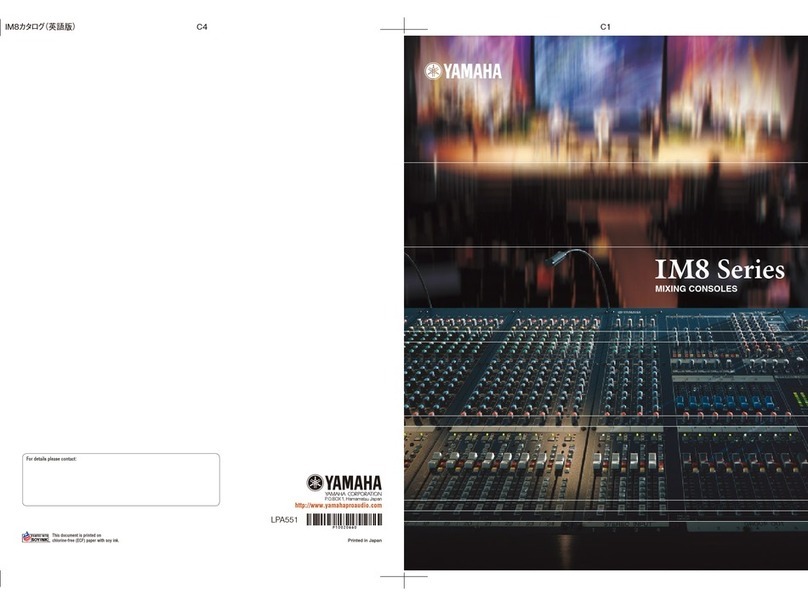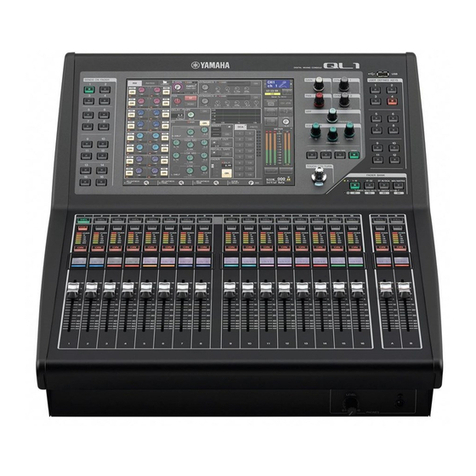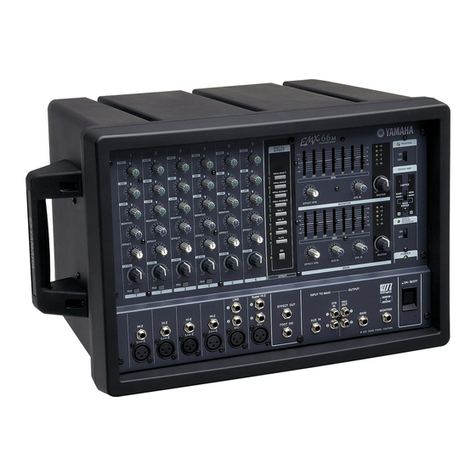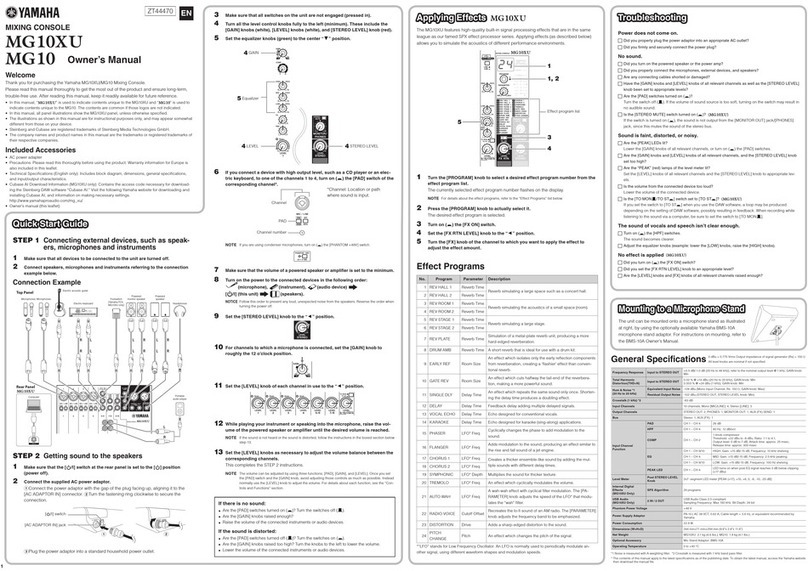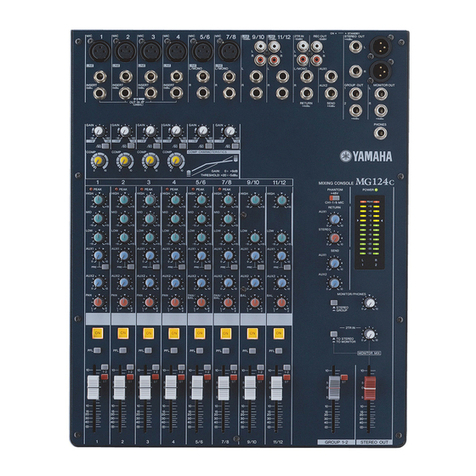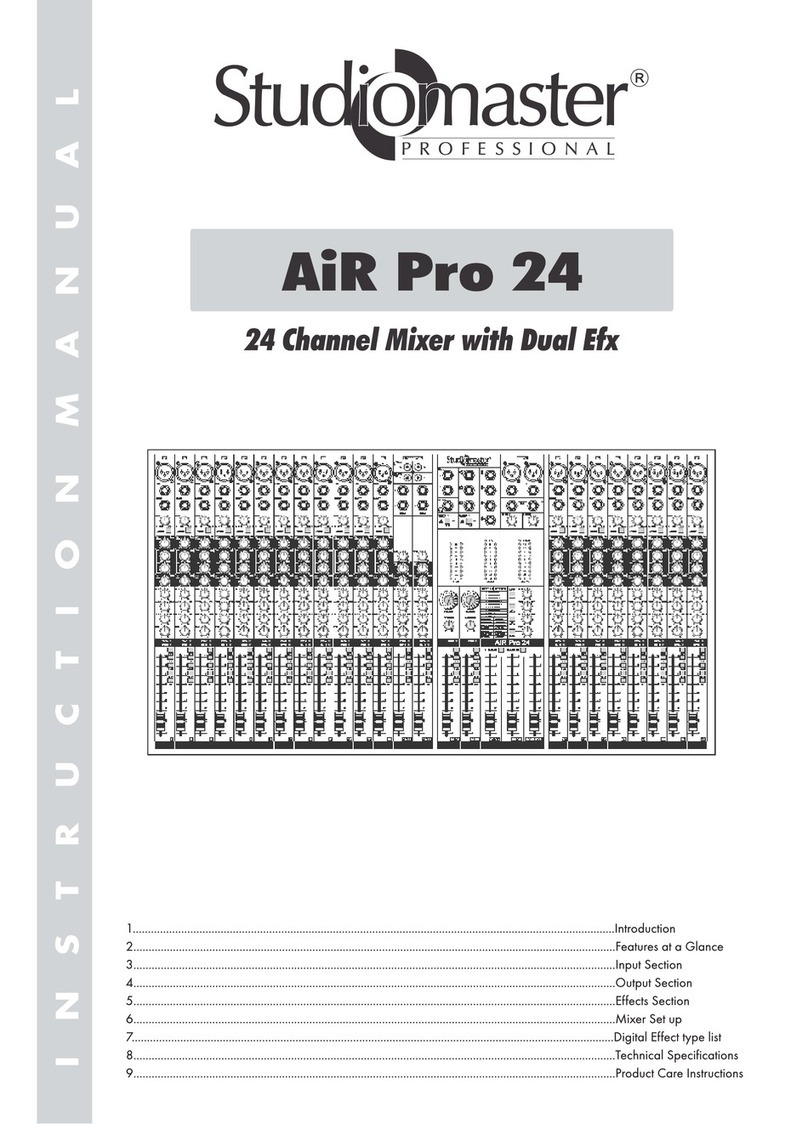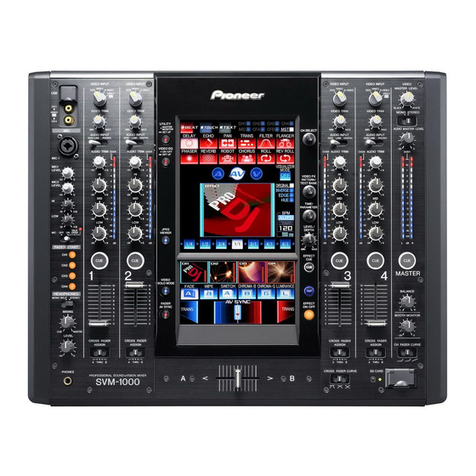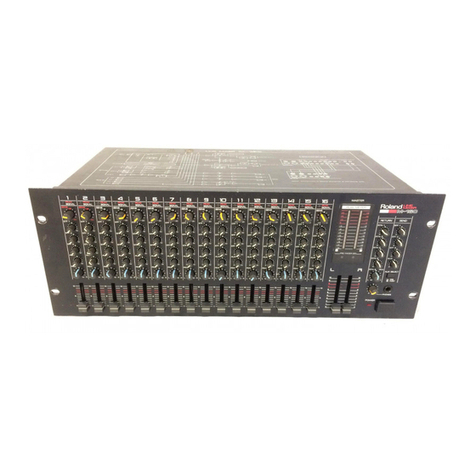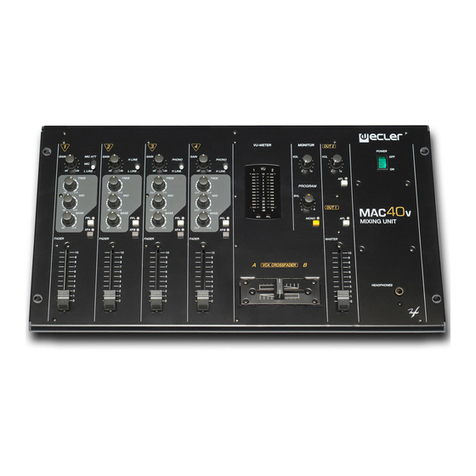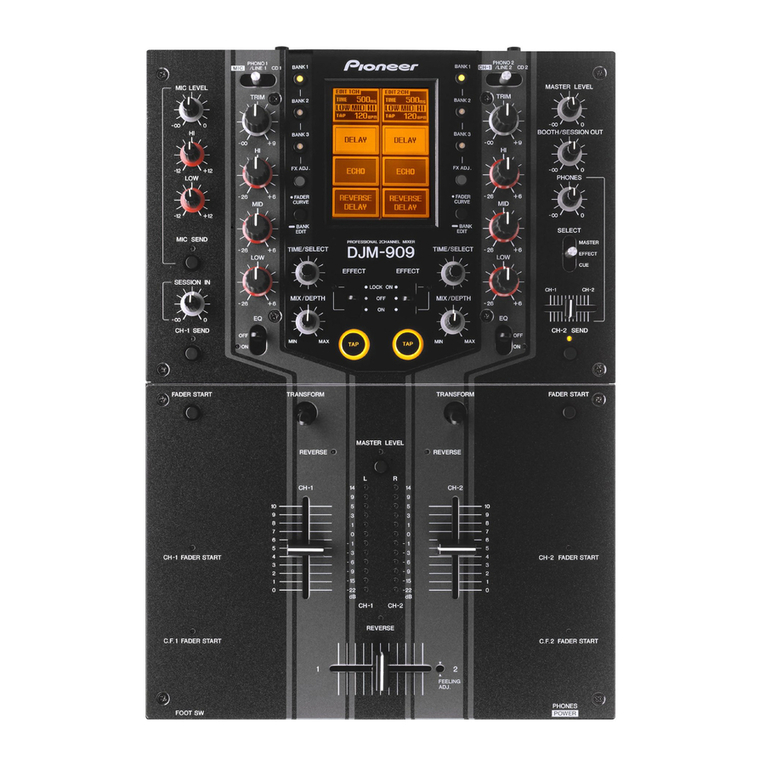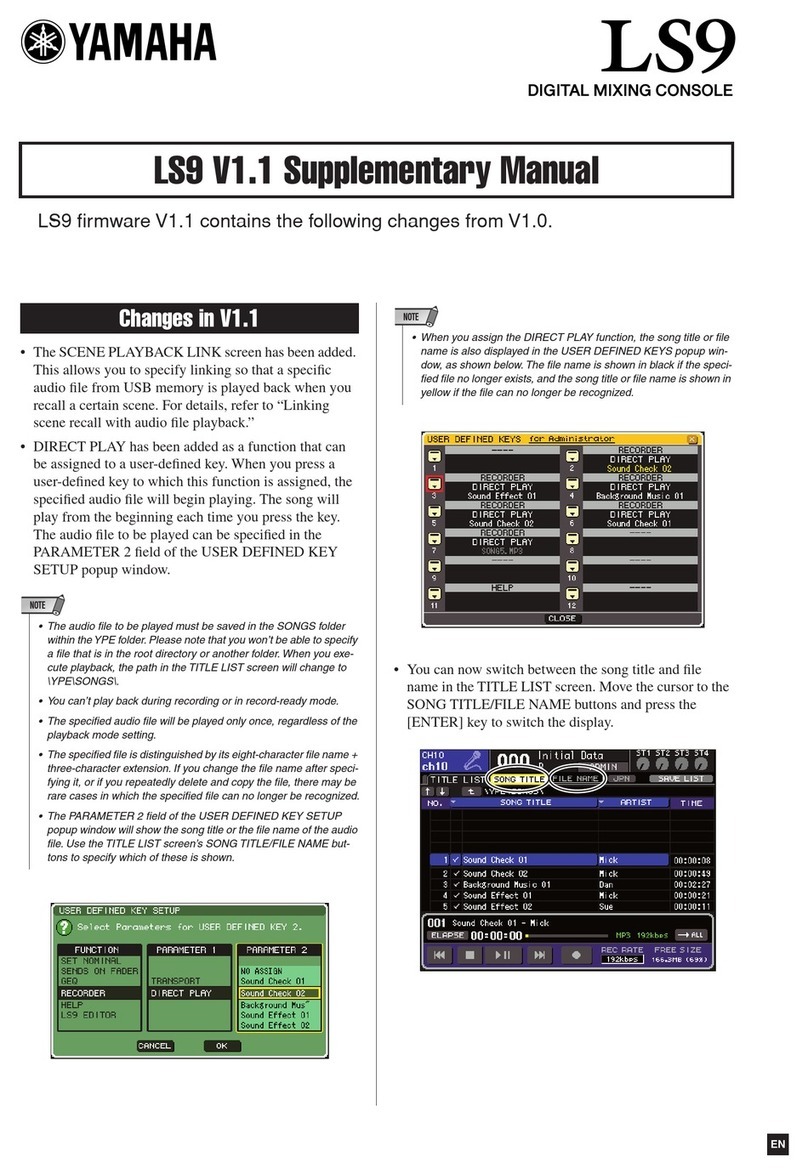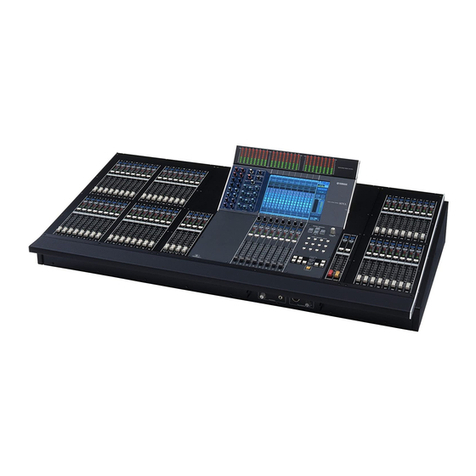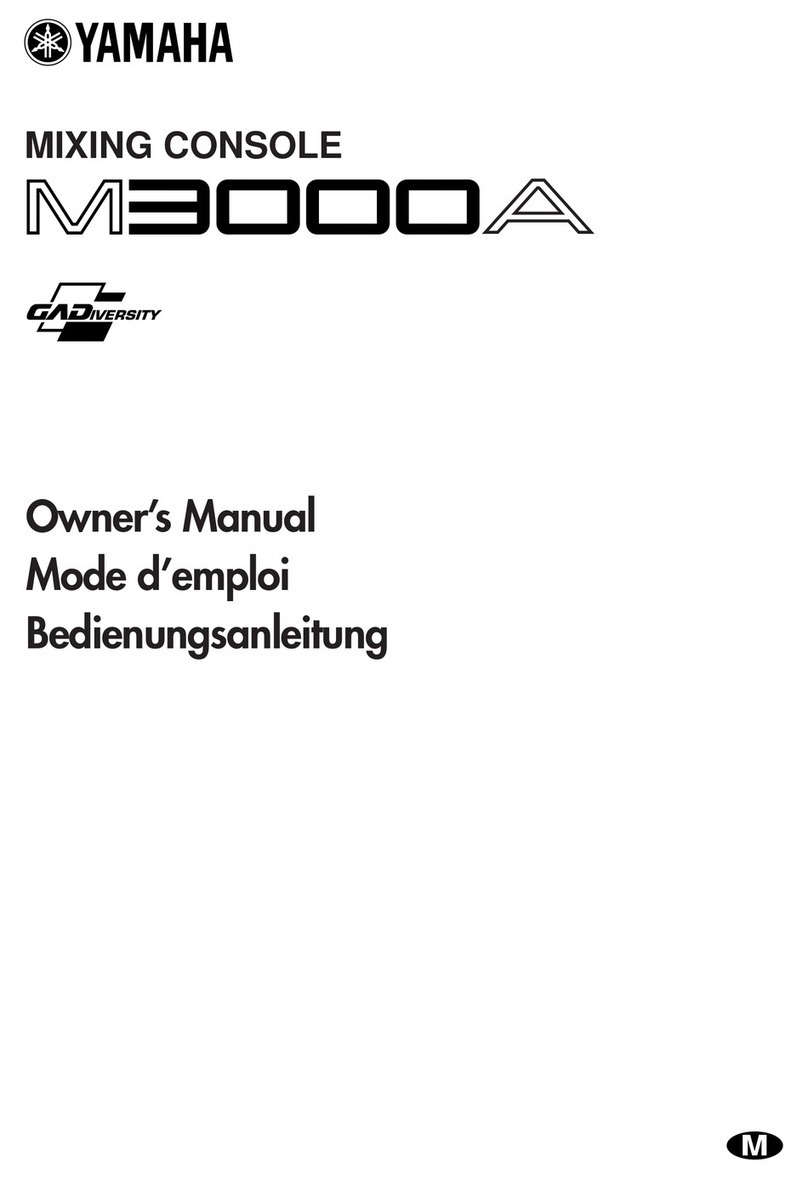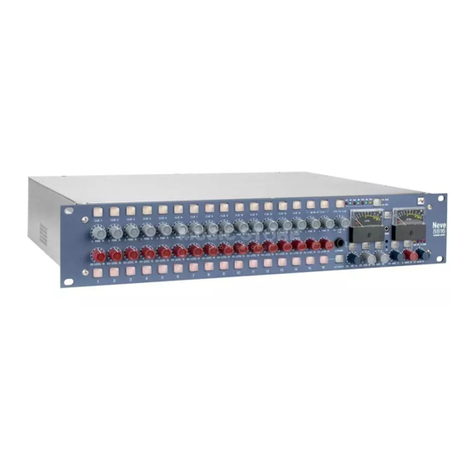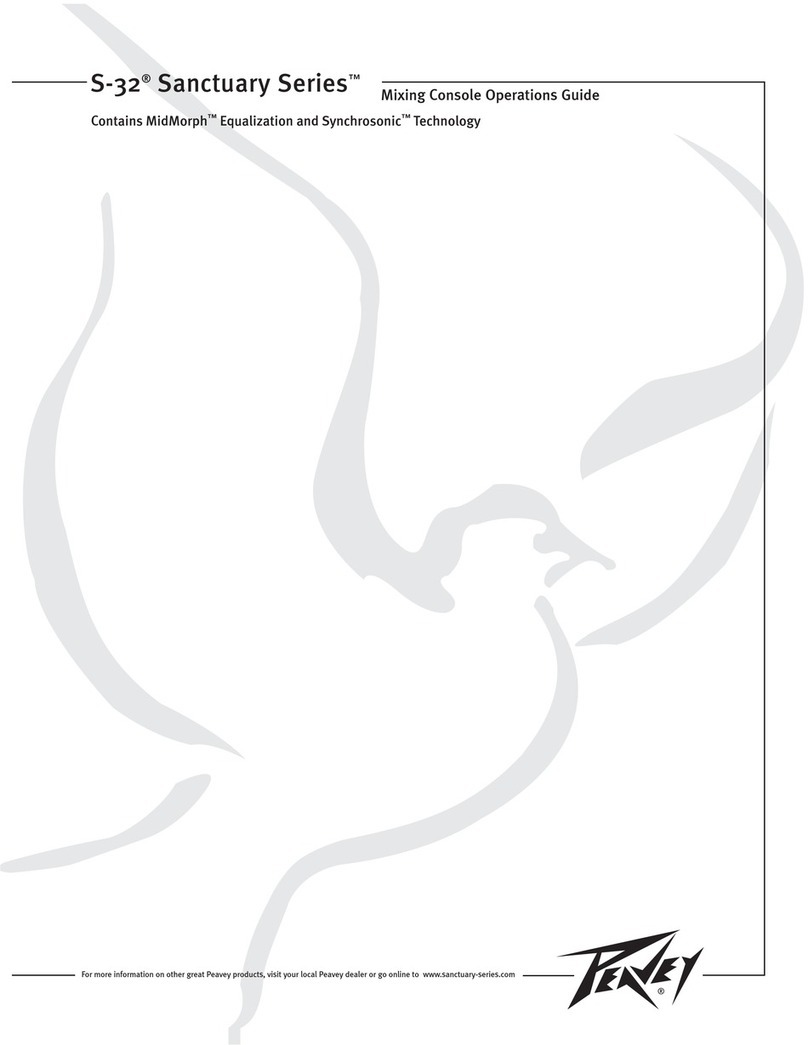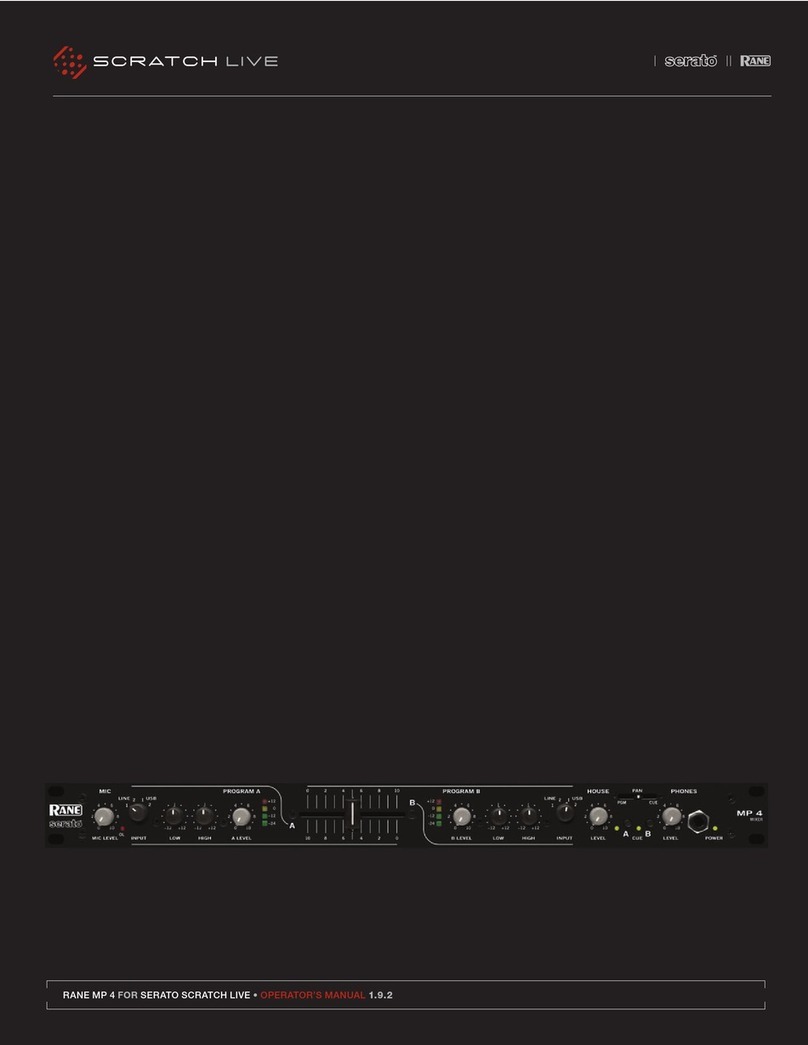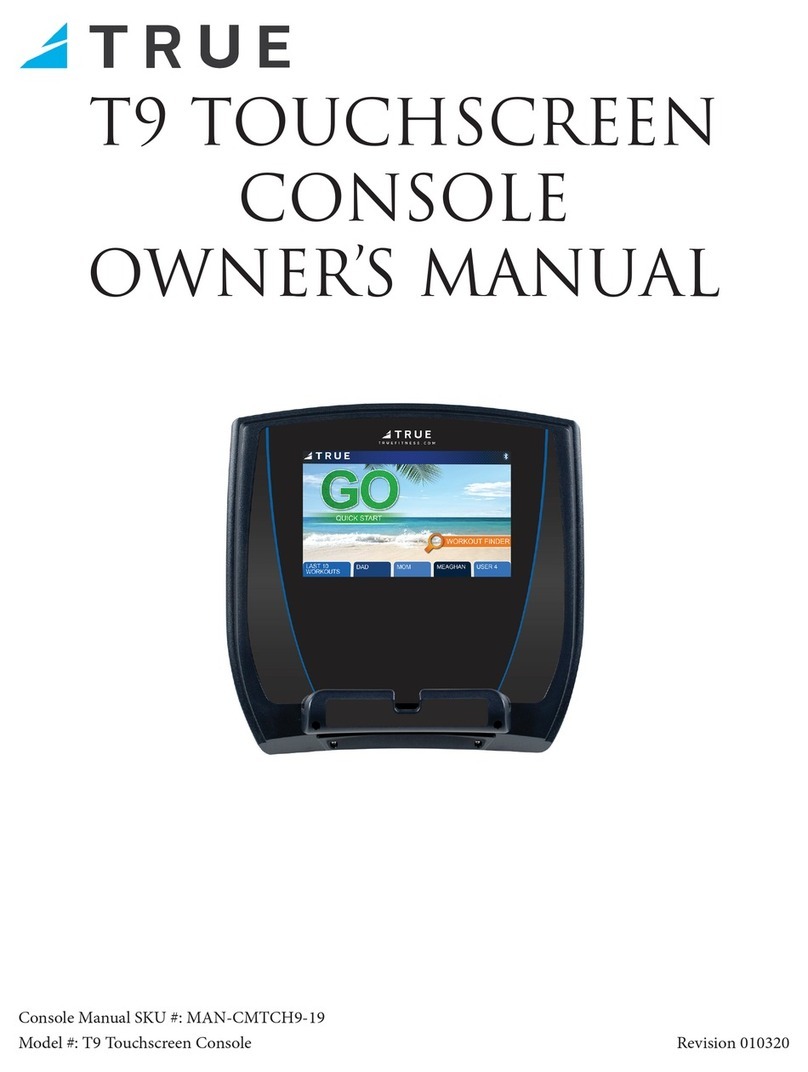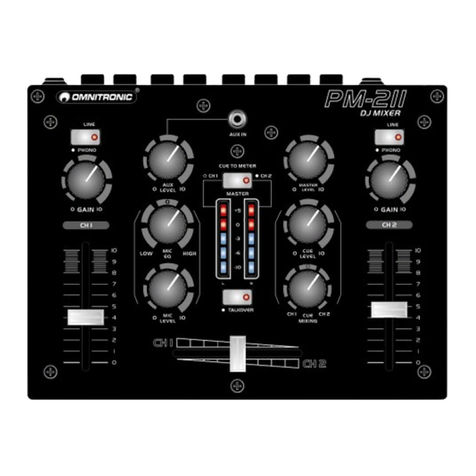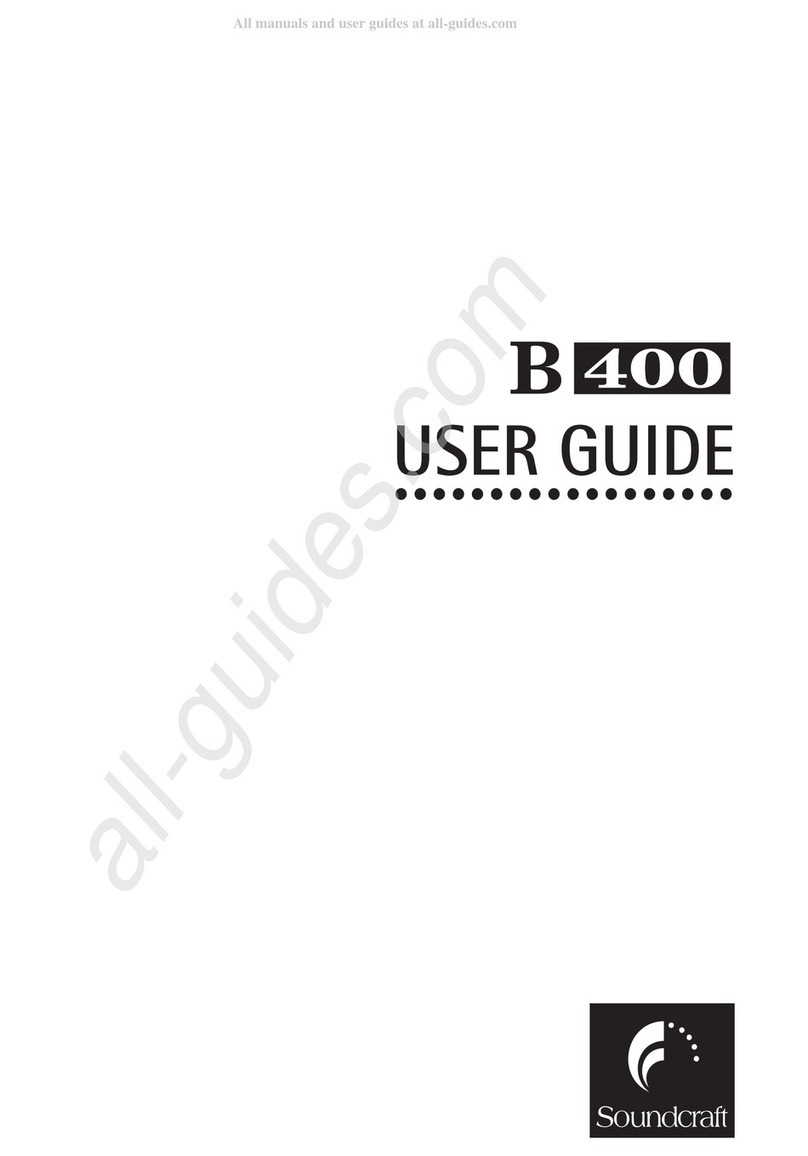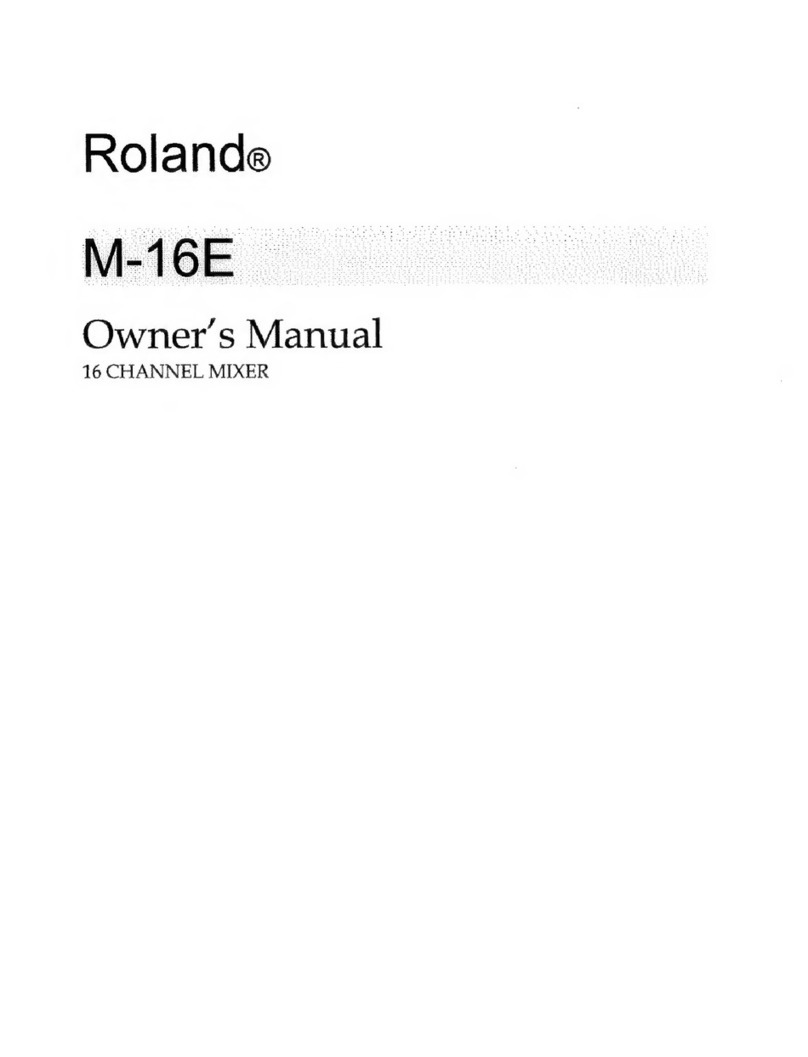
1
4
65
8
#
7
9
)
!
@
$
2
3
Elegant, Efficient, and Eminently Practical
Everything you need for hands-on mix control is right where you need it. The PM5D V2 physical control surface offers direct access
to all of the major functions you’re likely to need for just about any real-world application. And if you’re using one or two DSP5D
Digital Mixing System units for I/O and DSP expansion, you get seamless, comprehensive control directly from the PM5D V2 panel.
Mic Preamp Controls
While the PM5D V2 manual microphone preamplifiers have
physical phantom power, pad, gain, and insert switching
controls, the PM5D-RH’s recallable mic preamplifiers allow
access to the same parameters via the console’s encoders
and software. Both models offer peak and signal indication
LEDs for easy visual input level monitoring. If you’re
connected to a DSP5D Digitial Mixing System you have
complete control of its mic preamps directly from the
PM5D V2 console as well.
Input Patching
Although physical input jacks 1 through 48 on the rear panel of the PM5D
are connected to the corresponding internal channels by default, digital
patching provides total assignment freedom. You won’t have to run around to
physically re-patch cables whenever you need to reconfigure the system. The
same goes for the inputs on a connected DSP5D Digital Mixing System. On-
screen patch displays allow the system’s inputs and outputs to be patched to
appropriate I/O points and you can also assign and display channel names
for easy identification. Patch setups you might want to use again can be
stored in the patch library for instant recall at any time.
Channel Strip Controls
1Layer Select Keys
The CH 1-24 and CH 25-48 layer select keys
determine whether the console’s 24 physical mono
channel strips control channels 1 through 24 or 25
through 48. Additional layers can be accessed when
the PM5D is connected to one or two DSP5D units.
2ENCODER ON Key
Turns encoder assigned functions on or off. For
example, it can be used to switch the send to the
mix bus on or off.
3PRE Key
Selects pre or post mix send.
4Rotary Encoder
The function of the channel strip rotary
encoders is determined by the ENCODER MODE
keys (Refer to the Encoder Mode & Fader Flip
Keys at the opposite page). They can function as
mix send level controls, channel pan controls,
head amplifier gain or attenuation controls, or
as alternate-layer level controls.
5TO STEREO, GATE, and COMP
Indicators
The TO STEREO indicator lights when the
channel signal is feeding the stereo mix bus. The
GATE indicator lights when the channel gate is
closed, lights dimly during gate attack or decay,
and goes out when the gate is open. The COMP
indicator lights when the channel compressor is
applying gain reduction, lights dimly during
compressor attack or decay, and goes out when
no gain reduction is being applied.
6SEL Key
Assigns the corresponding channel to the
console’s SELECTED CHANNEL control section
and to the built-in LCD display. The SEL keys can
also be used to assign channels as stereo pairs.
7Channel Name Display
This 4-character display shows the assigned
name for the corresponding channel. The name
dims when the channel is muted.
8CH ON Key
Turns the corresponding input channel on
or off.
9Meter
A 6-point LED meter displays the channel
input level.
)DCA Indicators
The console’s input channels can be
assigned to any of 8 DCA. The DCA LEDs
indicate the DCA faders to which the channel
is assigned.
!MUTE Indicators
Input channels can be assigned to eight
mute groups for versatile mute control. The
MUTE LEDs indicate the mute groups to
which the corresponding channel is
assigned.
@RCL and MUTE SAFE Indicators
The RCL SAFE LED lights when the channel is set to the
recall safe mode so that it will not be affected by scene
recall operations. The MUTE SAFE mode prevents the
channel from being affected by mute group operations.
#Channel Fader
These very smooth and quiet 100mm motorized faders
control and display the channel input level, or the send level
to the selected mix bus when the FADER FLIP mode is on.
$CUE Key
Sends the channel signal to the cue bus for monitoring
according to the currently selected cue mode: LAST CUE,
MIX CUE, or SOLO and various function settings.
Stereo Input Channels
The stereo input channels are essentially the
same as the mono input channels, except that
they have stereo level meters, and ST IN 1-4 and
FX RTN 1-4 keys that assign the strips for stereo
input channel or stereo effect return operation.
ENCODER MODE & FADER
FLIP Keys
The ENCODER MODE keys determine the
function of the rotary encoders at the top of the
console’s channel strips: send level to each of
24 mix buses, channel pan, input gain of the
recallable head amps in the PM5D-RH V2 (or
connected remote recallable head amplifiers)
or attenuation after A/D conversion, and input
fader level of alternate (unselected) layer. The
FADER FLIP key swaps the functions assigned to
encoders and faders. For example, if you
engage the FADER FLIP key when MIX SEND is
selected, the channel-strip faders adjust the mix
send level while the encoders adjust the
channel input level.
1EQUALIZER & HPF
A flexible 4-band equalizer section with high and low bands switchable for shelving or
peaking response, variable frequency and Q on all bands, and an independent variable-
frequency HPF. Since 8-band EQ is provided for output channels, UPPER and LOWER keys
are provided to assign control to the upper or lower four bands.
2STEREO
The STEREO section allows the currently selected channel signal (input, stereo input, effect
return, mix) to be routed to the stereo bus with pan control.
3COMPRESSOR
This is a full-featured compressor/expander/compander/de-esser module with independent
threshold, range, attack, release, knee and ratio parameters. Like the noise gate section, the
compressor section includes a six-segment gain reduction meter for convenient visual
monitoring.
4DELAY
Turns the channel delay on or off, and sets the delay time
from 0 to 1,000 milliseconds for the selected input
channel.
5GAIN/ATTENUATION/Ø
When the GAIN/ATT key is on the encoder adjusts the gain
of a recallable microphone preamplifier patched to the
input of the selected channel. When the GAIN/ATT key
indicator is off the encoder adjusts attenuation for the
selected channel. The Ø key inverts the phase of the
selected channel.
6NOISE GATE
Extremely versatile noise gate provides effective noise
suppression, ducking, and other gate functions. Extensive
control is provided with independent threshold, range,
attack, hold, and decay parameters, as well as key-ins and
key-in filters.
7GROUP
This section controls channel to DCA and MUTE group
assignments. The DCA keys assign the currently selected
input channel to one or more of the DCA faders, while the
MUTE keys assign the currently selected input channel to
one or more of the eight available mute groups. The
GROUP section also includes RECALL SAFE and MUTE
SAFE assign keys that engage or disengage recall safe
and/or mute safe status for the currently selected input
channel.
8CHANNEL SELECT
This section can be used to select the channel to which the
SELECTED CHANNEL controls will apply. COPY and PASTE
function are also included, making it easy to copy all
parameters from one channel to any other channel.
INPUT PATCH
SELECTED CHANNEL Controls
8 9

